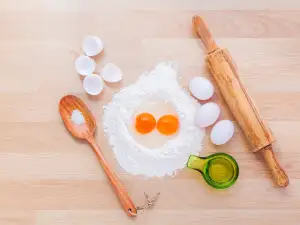Mastering the Art of Hasselback: Elevate Your Potato Game with This Easy Technique

The Hasselback technique originated in Sweden and is named after the Hasselbacken restaurant in Stockholm. This method involves making thin, accordion-like cuts along a vegetable without slicing all the way through, creating a unique presentation and allowing for even cooking. Originally used for potatoes, this technique has now been adapted for various vegetables like sweet potatoes, zucchinis, and butternut squash. Mastering the art of Hasselback can elevate your dish to a new level of sophistication and flavor.
Choosing the Right Vegetable
When it comes to mastering the art of Hasselback, choosing the right vegetable is crucial. While potatoes are the classic choice for Hasselback slicing due to their starchy texture and ability to hold their shape, other vegetables can also be used. Sweet potatoes, zucchinis, carrots, and even butternut squash are great alternatives that offer unique flavors and textures when prepared using the Hasselback technique. It's important to select vegetables that are firm and not too soft to ensure clean and precise cuts during slicing. Experimenting with different vegetables can lead to delightful new culinary creations that elevate your dish to a whole new level of sophistication.
Preparing the Vegetable for Hasselback Slicing
Preparing the vegetable for Hasselback slicing is a crucial step to ensure even cooking and a visually appealing presentation. Start by selecting a medium-sized vegetable, such as a potato or zucchini, and wash it thoroughly. Place the vegetable on a cutting board and make thin, evenly spaced cuts along its length, being careful not to slice all the way through. To help with this process, you can place chopsticks or wooden spoons on either side of the vegetable to act as a guide for your knife. This technique will result in beautifully fanned slices that are connected at the base, creating a stunning effect once cooked.
Seasoning and Flavoring Options
When it comes to seasoning and flavoring your Hasselback vegetables, the options are truly endless. A classic choice is to brush the vegetable with melted butter or olive oil before baking, as this helps achieve a crispy exterior. You can then sprinkle with salt, pepper, and herbs like rosemary or thyme for a simple yet delicious flavor profile.
For a more indulgent twist, consider stuffing the slices with cheese, garlic, or bacon bits. This adds a rich and savory element to your dish that will surely impress your guests. Alternatively, you can experiment with different spice blends such as paprika, cumin, or curry powder for a unique and exotic taste.
Don't be afraid to get creative with your seasoning choices - whether sweet or savory, mild or spicy, there's no wrong way to season your Hasselback vegetables. Just remember to adjust the seasoning according to your personal preferences and dietary restrictions for a dish that suits your taste buds perfectly.
Baking or Roasting Hasselback Vegetables
Once you have prepared your vegetable with the Hasselback technique and seasoned it to perfection, it's time to bake or roast it to crispy perfection. Preheat your oven to 400°F (200°C) and place the vegetable on a baking sheet lined with parchment paper. Drizzle some olive oil over the top and season with additional herbs or spices if desired.
Bake the vegetable for about 45-60 minutes, depending on the thickness of the slices and the type of vegetable used. You can also cover it with foil for the first half of the cooking time to ensure even cooking before removing the foil to allow the top to crisp up.
For a quicker option, you can also roast your Hasselback vegetable at a higher temperature, around 425°F (220°C), for about 30-40 minutes. Keep an eye on it towards the end to prevent burning.
The end result should be a beautifully caramelized and crispy exterior with a tender interior. Serve hot as a side dish or even as a main course for a visually stunning and delicious meal.
Serving and Presentation Tips
When it comes to serving and presenting Hasselback vegetables, there are a few tips to keep in mind to elevate your dish. Firstly, arranging the sliced vegetable in a fan-like shape on the plate not only looks visually appealing but also allows for easy serving. Additionally, garnishing with fresh herbs like parsley or chives adds a pop of color and freshness to the dish. Serving Hasselback vegetables alongside a dipping sauce or aioli can enhance the flavors and provide an extra layer of indulgence. Finally, using high-quality serving platters or dishes can further enhance the presentation of your Hasselback creation, making it a feast for both the eyes and the taste buds.
Variations and Creative Ideas
1. **Cheese Lover's Delight**: Stuff the Hasselback slits with a mix of grated Parmesan, mozzarella, and cheddar for a gooey, cheesy finish.
2. **Herb Infusion**: Slide thin slices of garlic and fresh herbs like rosemary or thyme between the cuts for an aromatic burst of flavor.
3. **Pesto Perfection**: Brush homemade or store-bought pesto over the vegetable before baking for a vibrant and zesty twist.
4. **Spice it Up**: Sprinkle paprika, cayenne pepper, or chili flakes over the top before baking to add a kick of heat.
5. **Sweet & Savory**: Alternate savory toppings like bacon bits with sweet additions like maple syrup drizzle for a delicious contrast in every bite.
6. **Mediterranean Magic**: Layer sliced olives, sun-dried tomatoes, and feta cheese on top for a taste of the Mediterranean in every slice.
7. **Asian Fusion**: Drizzle soy sauce, sesame oil, and sprinkle sesame seeds over the vegetable before baking to infuse Asian flavors into this classic dish.
These creative ideas will elevate your Hasselback game and impress your guests with unique flavors and textures that go beyond the traditional recipe.
Health Benefits of Hasselback Vegetables
Hasselback vegetables, such as potatoes, sweet potatoes, and zucchinis, offer numerous health benefits. By keeping the skin on during cooking, you retain essential nutrients like fiber, vitamins, and minerals. The Hasselback technique also allows for a lower cooking temperature and shorter cooking time compared to traditional methods, helping to preserve more nutrients. Additionally, the accordion-like cuts increase surface area, allowing for better absorption of seasonings with less need for added fats or oils. This method promotes healthier eating habits by reducing the amount of unhealthy toppings typically used on baked or roasted vegetables. Enjoying Hasselback vegetables can be a delicious way to incorporate more nutrients into your diet while still indulging in a satisfying dish.
Published: 17. 03. 2024
Category: Recipes



